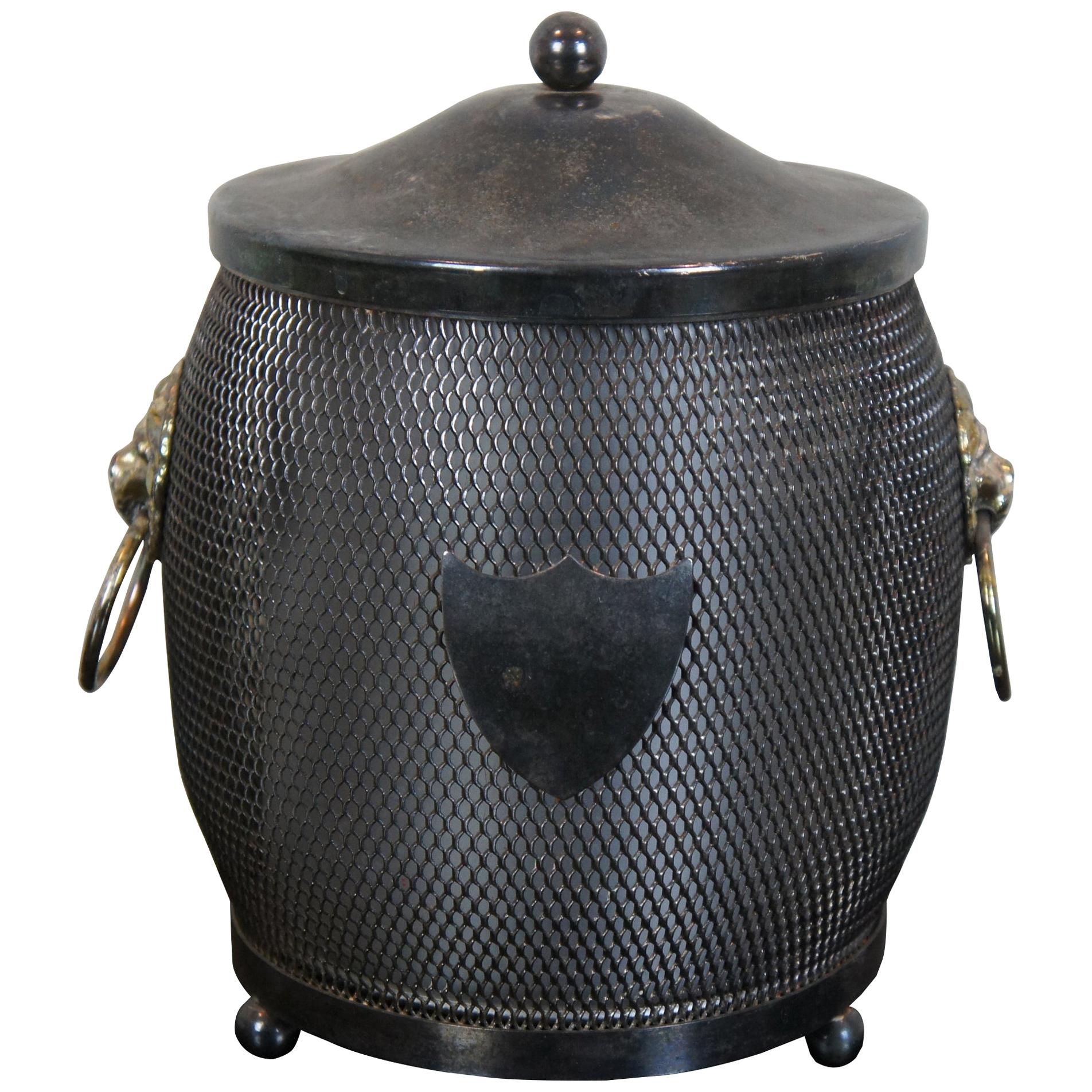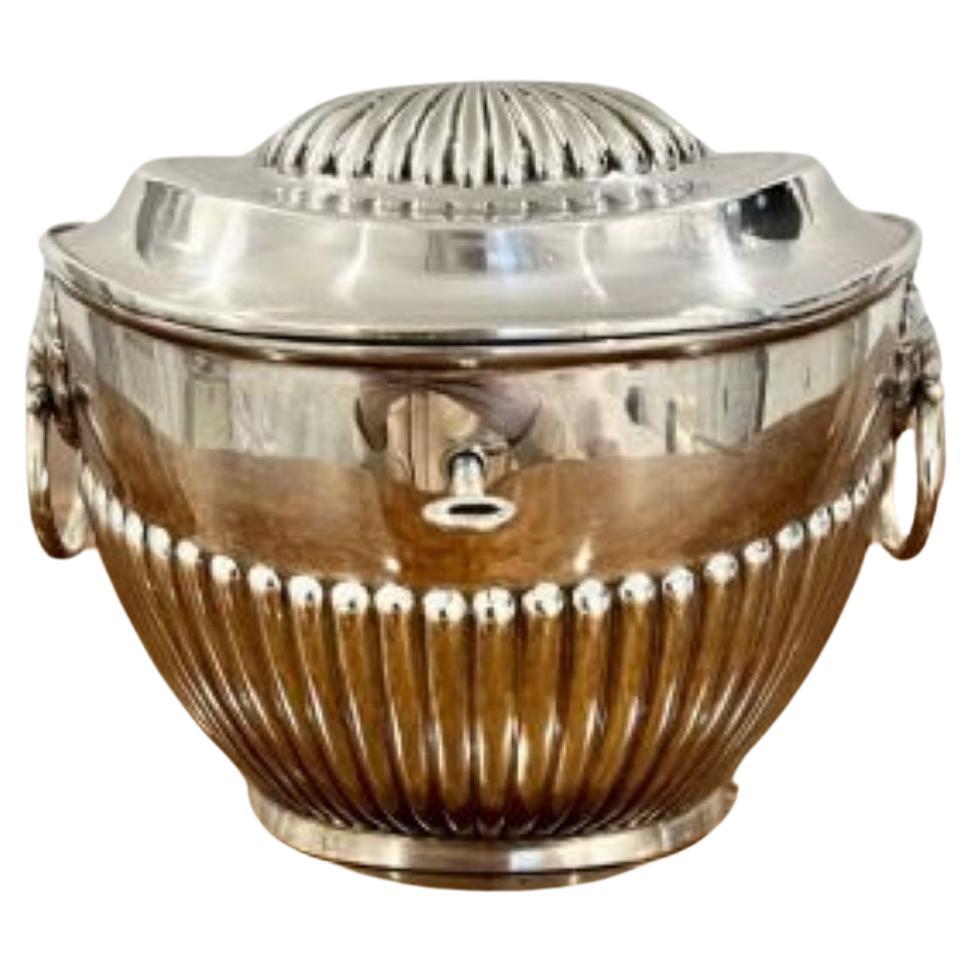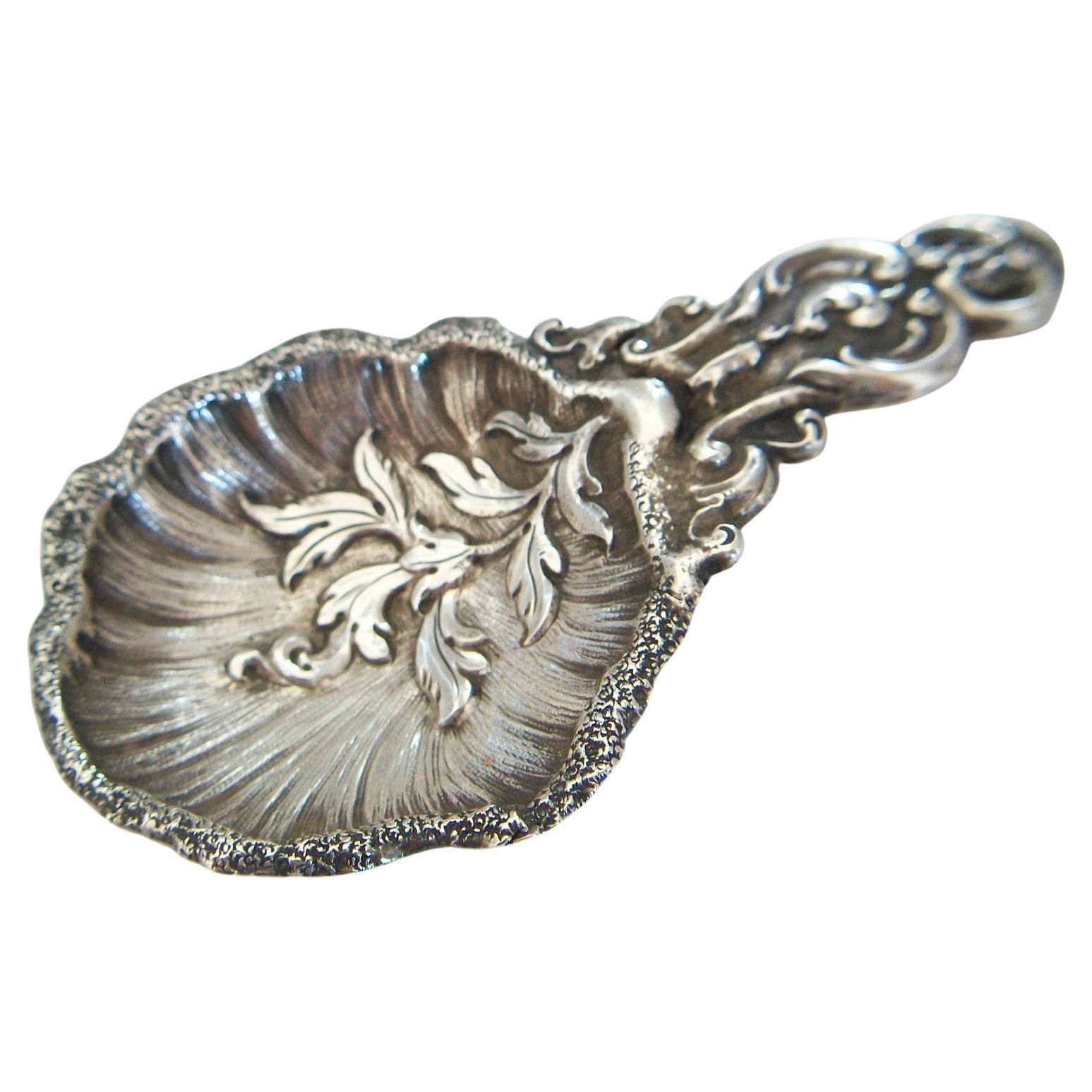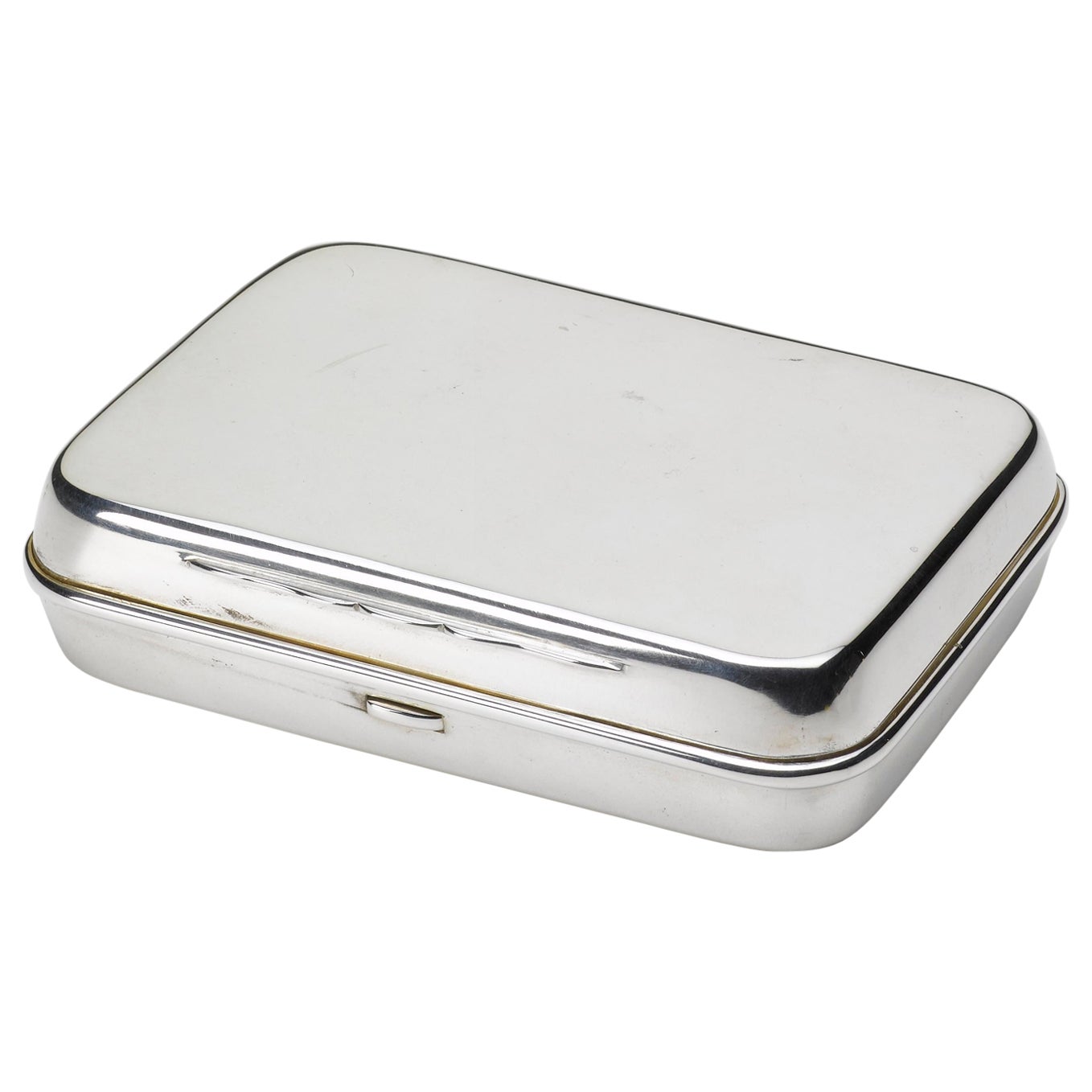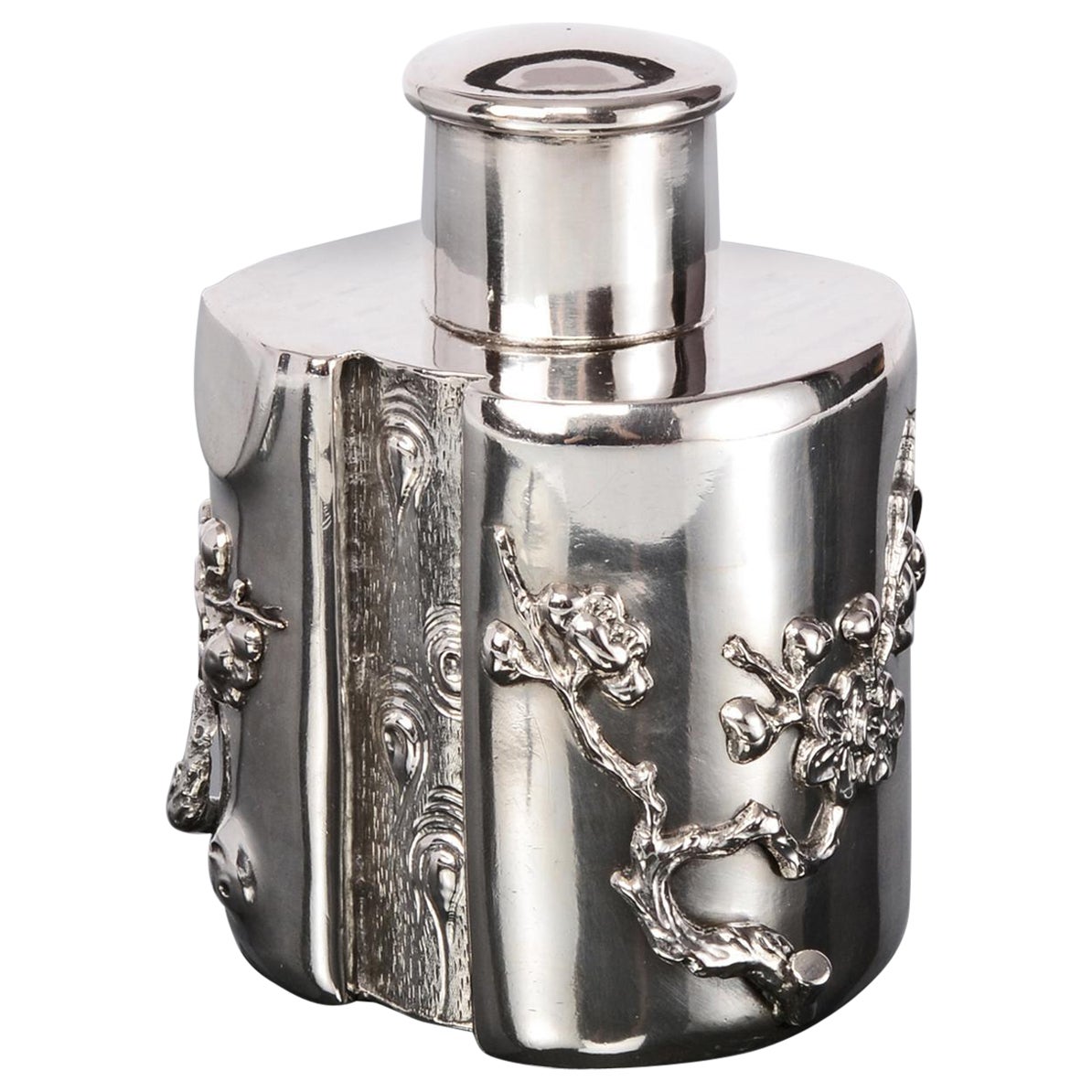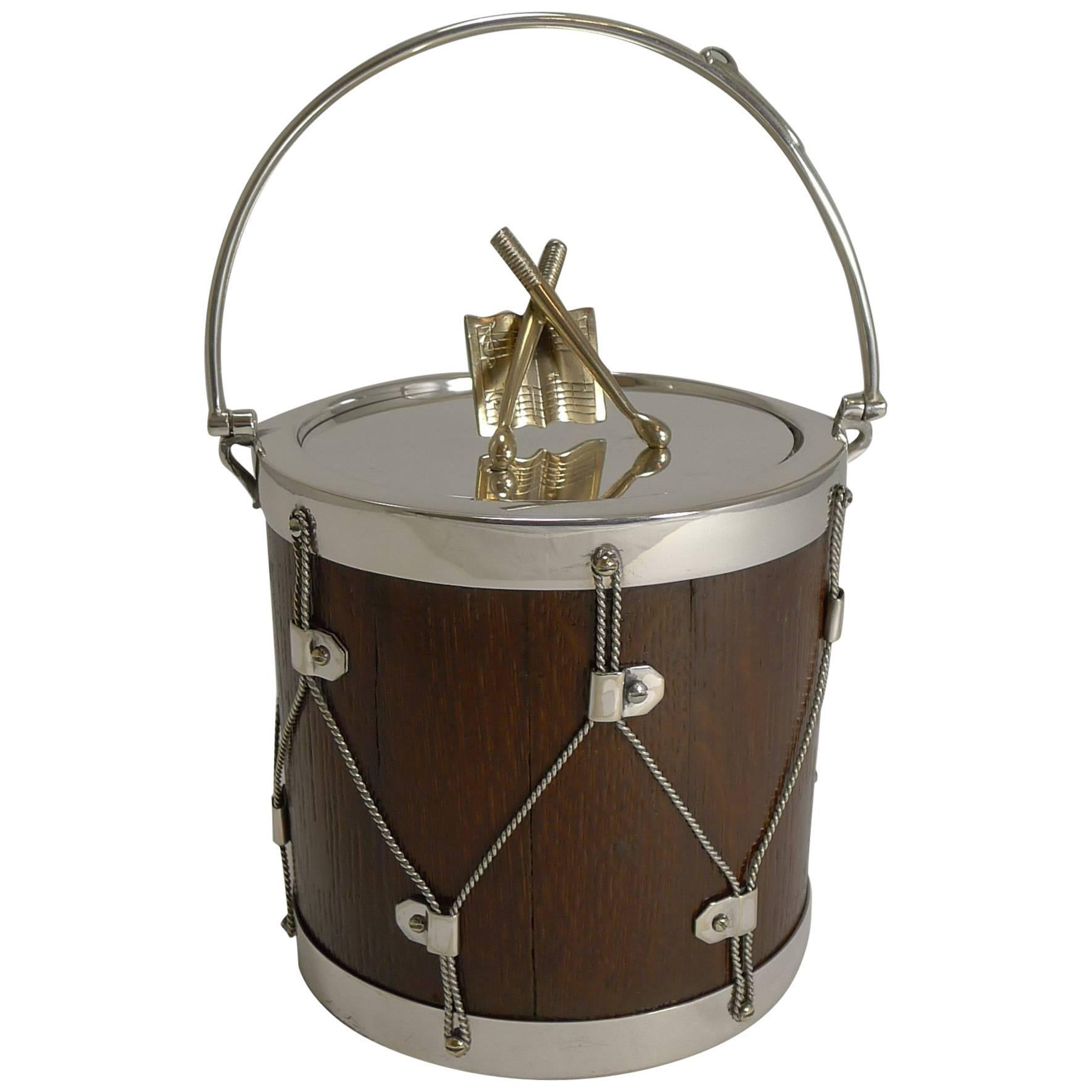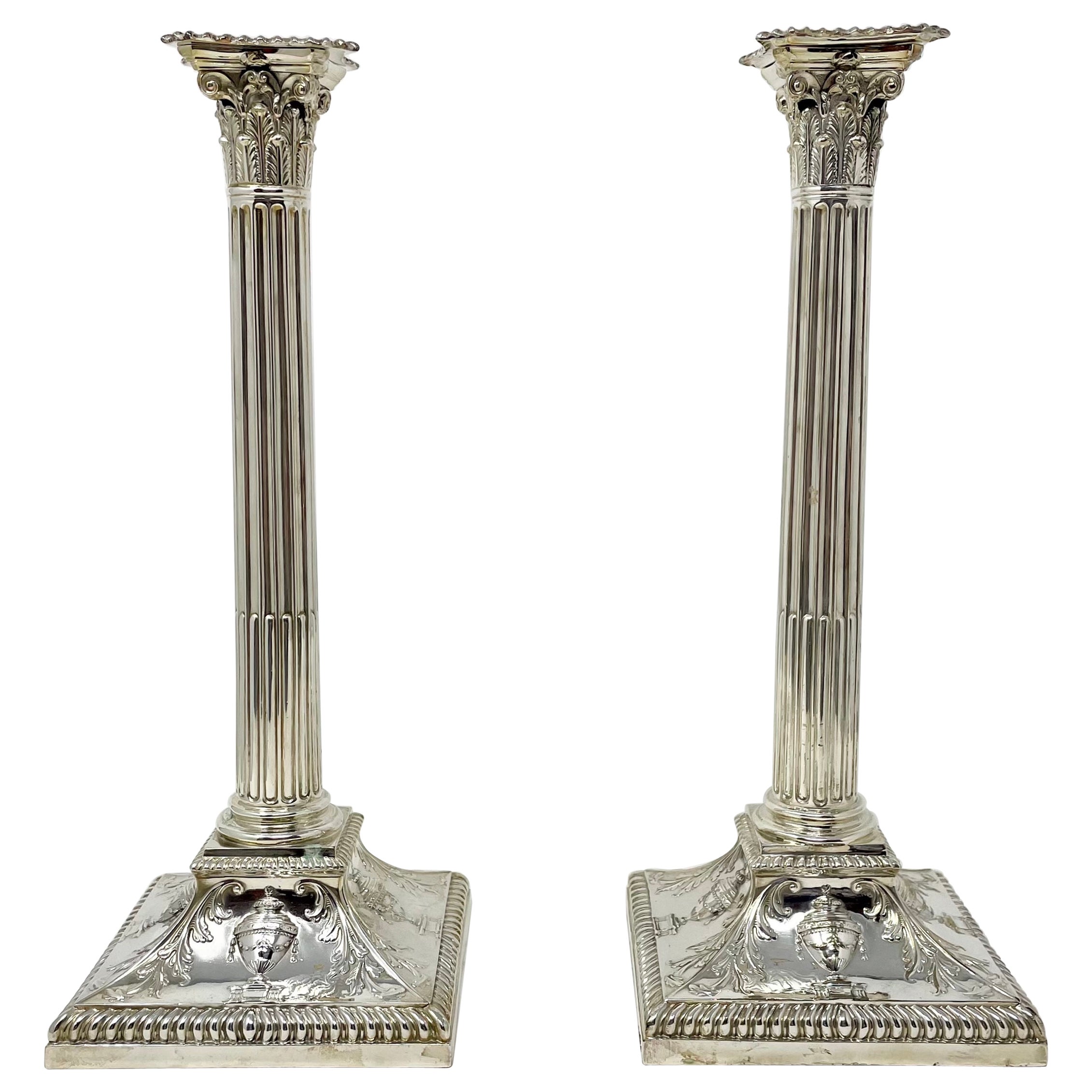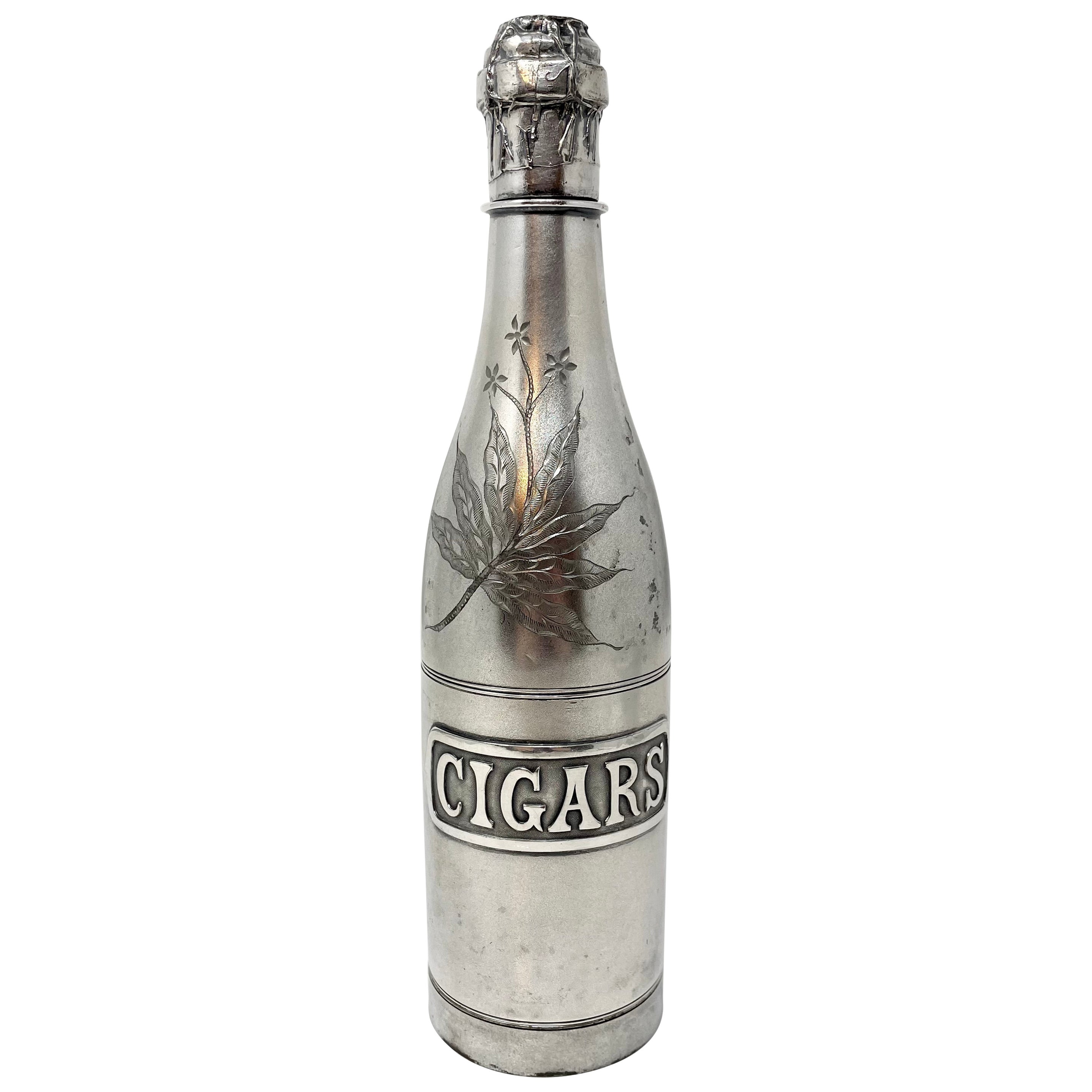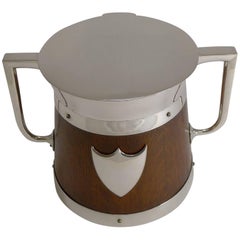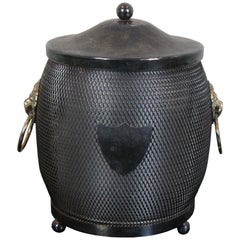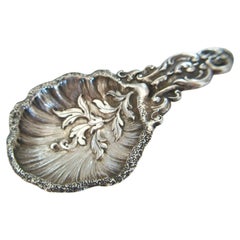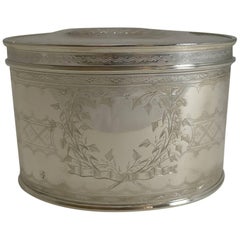
Quality Large Antique English Silver Plated Tea Caddy, circa 1900
View Similar Items
Want more images or videos?
Request additional images or videos from the seller
1 of 10
Quality Large Antique English Silver Plated Tea Caddy, circa 1900
About the Item
- Dimensions:Height: 4.25 in (10.8 cm)Width: 5.75 in (14.61 cm)Depth: 4 in (10.16 cm)
- Style:Edwardian (Of the Period)
- Materials and Techniques:Silver Plate,Plated
- Place of Origin:
- Period:1900-1909
- Date of Manufacture:circa 1900
- Condition:Wear consistent with age and use.
- Seller Location:Bath, GB
- Reference Number:Seller: 401981stDibs: LU3365310637191
About the Seller
5.0
Platinum Seller
These expertly vetted sellers are 1stDibs' most experienced sellers and are rated highest by our customers.
Established in 1980
1stDibs seller since 2018
412 sales on 1stDibs
Typical response time: 2 hours
More From This SellerView All
- Antique English Oak & Silver Plated Drum Form Biscuit Box or Barrel, circa 1890Located in Bath, GBA wonderful Victorian biscuit box or barrel, always highly sought-after in this Drum form, I have probably not had one for three or four years, that's how scarce and hard to come by they are. The fittings are made from silver plate with the lid topped with a finial in the form of a pair or drum sticks...Category
Antique Late 19th Century English Late Victorian Decorative Boxes
MaterialsSilver Plate
- Antique English Oak and Silver Plate Biscuit Box by John Grinsell & SonsBy John Grinsell & SonsLocated in Bath, GBA handsome and very stylish biscuit box dating to circa 1890 by the top notch silversmith, John Grinsell & Sons of Sheffield. Made from solid English oak, the box is fitted with e...Category
Antique Late 19th Century English Late Victorian Decorative Boxes
MaterialsSilver Plate
- Antique English Silver Plated Strawberry Set by Roberts and Belk, circa 1900By Roberts & Belk Ltd. 1Located in Bath, GBA highly decorative late Victorian or Edwardian Strawberry set with all over repousse decoration. These are popular to serve cookies and cakes too, perfect with tea serving the milk and sugar from the creamer and sugar bowl; always impressive whatever you use it for. All three silver plated pieces are marked by the well renowned Sheffield silversmith, Roberts and Belk...Category
Antique Early 1900s English Edwardian Platters and Serveware
- Antique English Inlaid Mahogany Tea Caddy, circa 1790Located in Bath, GBA very handsome George III tea caddy, made from Mahogany and beautifully inlaid with panels and highly decorative foliate marquetry to the front and top. The top has a handsome cast ...Category
Antique 1790s English George III Tea Caddies
MaterialsMahogany
- Outstanding Large Pair of Horn and Silver Plate Cornucopia, circa 1900Located in Bath, GBA rare pair of oversized Cornucopia, larger than most and a real show stopper. Probably German in origin, they are marked on the base with a star or daisy mark which I am not familia...Category
Antique Early 1900s German Edwardian Sheffield and Silverplate
MaterialsSilver Plate
- Quality Antique English Cut Glass & Silver Plate Biscuit Box / Barrel, c.1860Located in Bath, GBA particularly good and unusual cut glass biscuit box which would equally make a wonderful ice bucket or pail. Earlier than most of this type, it dates to around 1860, mid-Victori...Category
Antique 1860s English Victorian Sheffield and Silverplate
MaterialsSilver Plate
You May Also Like
- English Silver Plated Lion Head Shield Tea Caddy Biscuit Barrel Jar Ice BucketLocated in Dayton, OHVintage made in England biscuit barrel, tea caddy or small ice bucket made of metal mesh with shield accent (no monogram) and lions head handles. Incl...Category
Mid-20th Century Georgian Sheffield and Silverplate
MaterialsSilver Plate
- Antique Victorian quality silver plated tea caddyLocated in Ipswich, GBAntique Victorian quality silver plated tea caddy having a quality reeded lid, lions head ring handles to both sides, reeded decoration round the body having the original key with wo...Category
Antique Early 19th Century Victorian Tea Caddies
MaterialsSilver Plate
- Rococo Style Repousse Silver Plate Tea Caddy Spoon, U.K., Mid-19th CenturyLocated in Chatham, ONAntique Rococo style silver plate tea caddy spoon - featuring repousse shell shaped decoration with leaves - 'c' scrolls to the handle - fine quality workmanship and classic details ...Category
Antique Mid-19th Century English Rococo Revival Sheffield and Silverplate
MaterialsSilver Plate
- Hallmarked Silver Plated Keepsake Box, Sheffield, UK, circa 1900Located in Colorado Springs, COOffered is a stunning silver plated keepsake box dating to 1900, with associated hallmark. This small box includes a wooden interior with two slots and a blank square on top where initials could have been engraved. A well maintained, elegant piece, this antique silver box is an excellent addition to any silver or home decor collection. Trinket or keepsake boxes have taken on many forms since their first conception in ancient times. However their purpose remains the same; to store jewelry and other items precious to the owner. Originally, these boxes were used specifically for jewelry. These were in common use as early as 5000 BC in Ancient Egypt, when the majority of Egyptians, both male and female, wore jewelry. Boxes were used to keep these gemstone encrusted items safe. In Ancient Rome, jewelry was a status symbol. Rings and brooches were utilized to represent ones status in society. Again, boxes were needed for security and storage purposes. Finding early examples of these are quite rare. Victorian and Edwardian examples of trinket boxes are far more common. This is because owning jewellery was a luxury until the Victorian era- let alone possessing so much a box was needed to store it all. Fine jewelry and other items became available to the masses after the industrial revolution due to the reduction in production costs. This led to a demand for trinket boxes, which were much smaller than jewelry boxes and therefore better suited to the needs of the middle class who did not yet possess an abundance of jewelry. In Victorian households, collectables and other items of interested were also stashed inside these boxes. This is why they are known as trinket or keepsake boxes, rather than just jewelry boxes, although of course jewelry was also stored in them. Trinket boxes were produced in large numbers around this time. Many were lined with colored plush or velvet or rich wood. More elaborate designs had interior divisions and trays for rings and other pieces of jewellery. It was also common to see trinket boxes so small that they could only contain one item, such as a single ring. Ornate exteriors were created to reflect the value of the trinket boxes contents. The Edwardian era saw the introduction of new styles of trinket box. These included small circular or oblong boxes...Category
Antique Early 1900s English Art Deco Decorative Boxes
MaterialsSilver
$600 Sale Price20% Off - Hallmarked Silver Plated Keepsake Box, Sheffield, Uk, Circa 1900Located in Colorado Springs, COOffered is a stunning Sheffield silver keepsake box dating to 1900, with associated hallmark. This small box includes a clean interior and rounded corners. The box is free of names or initials, but would have been used to house keepsakes such as jewelry or cufflinks. A well maintained, elegant piece, this antique silver box is an excellent addition to any silver collection. Trinket or keepsake boxes have taken on many forms since their first conception in ancient times. However their purpose remains the same; to store jewelry and other items precious to the owner. Originally, these boxes were used specifically for jewelry. These were in common use as early as 5000 BC in Ancient Egypt, when the majority of Egyptians, both male and female, wore jewelry. Boxes were used to keep these gemstone encrusted items safe. In Ancient Rome, jewelry was a status symbol. Rings and brooches were utilized to represent ones status in society. Again, boxes were needed for security and storage purposes. Finding early examples of these are quite rare. Victorian and Edwardian examples of trinket boxes are far more common. This is because owning jewellery was a luxury until the Victorian era- let alone possessing so much a box was needed to store it all. Fine jewelry and other items became available to the masses after the industrial revolution due to the reduction in production costs. This led to a demand for trinket boxes, which were much smaller than jewelry boxes and therefore better suited to the needs of the middle class who did not yet possess an abundance of jewelry. In Victorian households, collectables and other items of interested were also stashed inside these boxes. This is why they are known as trinket or keepsake boxes, rather than just jewelry boxes, although of course jewelry was also stored in them. Trinket boxes were produced in large numbers around this time. Many were lined with colored plush or velvet or rich wood. More elaborate designs had interior divisions and trays for rings and other pieces of jewellery. It was also common to see trinket boxes so small that they could only contain one item, such as a single ring. Ornate exteriors were created to reflect the value of the trinket boxes contents. The Edwardian era saw the introduction of new styles of trinket box. These included small circular or oblong boxes...Category
Antique Early 1900s British Art Deco Decorative Boxes
MaterialsSilver
- Antique Chinese Silver Tea Caddy, circa 1900Located in London, GBA late 19th/early 20th century tea caddy made by the Canton-based artisan workshop LIAN XIANG SHENG 聨样盛 for the Canton and Hong Kong-based luxury goods retailer WANG HING 宏興 This particular style of tea caddy based on a naturalistic interpretation of prunus mume tree trunk takes its inspiration directly from Yixing unglazed stoneware [aka zisha] produced in Jiangsu Province. The Yixing potters began specialising in making teapots during the Ming dynasty as a direct result of the then new innovation of making tea from rolled leaves rather than the finely ground powdered tea that preceded it. In time, among Chinese tea connoisseurs, it was considered that a Yixing teapot...Category
Antique 19th Century Chinese Tea Caddies
MaterialsSilver
Recently Viewed
View AllMore Ways To Browse
Oval Tea Caddy
Large Tea Caddy
T1 Hinged
Silver Plated Tea Caddy
Antique Silver Plated Tea Caddy
Antique Silver Plate Tea Caddy Boxes
Dome Tea Caddy
English Double Tea Caddy Box
Tea Box Used
Tea Box
Tea Boxes Antique
Tea Box Antique
Antique Tea Box
Tea Caddy
Tea Caddy Antique
Antique Tea Caddy
Caddy Box
Tea Box Caddy
